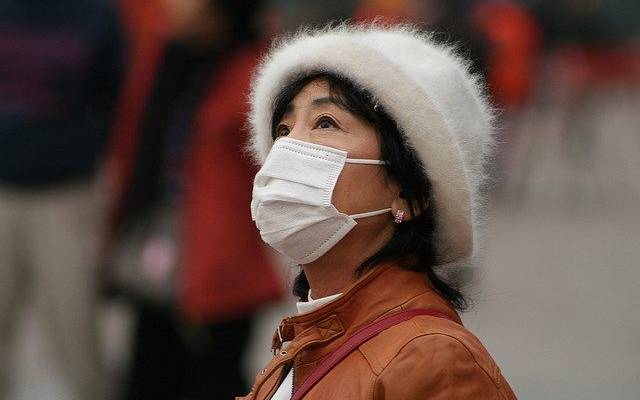
The people of Wuhan — the epicenter of China’s deadly coronavirus outbreak — must feel like they have been vaulted into a parallel universe.
Their city has been locked down in what may be the world’s biggest ever quarantine attempt. At least two nearby cities had been quarantined as of midnight last night, with more expected to follow.
Wuhan is the capital of Hubei which, with almost 60 million people, is China’s seventh most populous province.
The virus has derailed celebrations for Chinese New Year, or Spring Festival, centred around the lunar new year on January 25.
Fearing a repeat of the 2002-03 SARS scare, where under-reporting of a deadly flu and concomitant inaction by Chinese authorities saw 770 people die, drastic measures have been enforced.
Public transport has been shuttered and hundreds of trains, planes and ships have been cancelled or rerouted. Cinemas, restaurants, cafés, bars and public spaces have been closed.
Trying to isolate a city that boasts an official population of 11 million — closer to 20 million when you include the nearby cities of Huanggang and Ezhou — is no easy feat.
Experts see the response as heavy-handed and extreme; one that may backfire by exacerbating the spread of disease as healthy people are unable to leave. As many as 4000 people may already be infected, according to researchers at London’s Imperial College.
Stories are emerging from Wuhan of people dying untested, with cause of death listed as “pneumonia” or other respiratory illnesses. Hospitals are allegedly turning away people who seek to be tested.
The lockdown will play havoc with family reunions, the central theme of Spring Festival, for the people of Wuhan, and in particular its economic migrants and emigrees.
Many come from the countryside to work low-paying labour or port jobs, drawn to a city whose annual GDP growth sits at around 8% (well above China’s national figure of 6.1%). The city is also home to higher-skilled middle-class workers attracted to the city’s high-tech industries.
Similarly, Wuhan natives working elsewhere in China won’t be making the trek home this spring. For millions of people, the next chance they will get to see their families will be the October “Golden Week”.
Medical researchers in Australia say that Beijing could have moved sooner, and there is clear evidence that little concrete work was being done until edicts were issued directly from leader Xi Jinping on January 21.
The coronavirus was first identified in late December. Authorities across the world, including in Australia, were told on January 8 to begin preparations for a potential pandemic, but for almost two weeks after that the people from Hubei were free to travel.
Panic has gripped the city, with people ditching substandard face masks for more protective “N96” masks. It is these masks that immigration and port officials around the world are donning.
Supermarket shelves have been emptied and petrol stations pumped dry as people settle into what is effectively a siege. Social media has understandably been going nuts, which is another headache for China’s leaders.
Those leaders are encouraging people to help keep watch. “Strictly implement emergency response requirements, enter into a state of war and implement wartime measures to resolutely curb the spread of this epidemic,” a Wuhan party committee urged. “Homes must be segregated, neighbours must be watched.”
The outbreak has directly hit tourism, retail and related sectors, market analysts noted. Wuhan is an important logistics hub and manufacturing centre. If the lockdown continues after the Lunar New Year holidays, it will affect industrial production (one of the city’s key growth drivers).
Education is already a casualty of the outbreak. Universities and other higher education institutions are telling students not to return to Wuhan until they get notification from their school.
Still, the die has been cast. The SARS outbreak of the early 2000s ran for several months; so for many millions of people living in Hubei’s new ghost-towns, this might be the new normal for sometime to come.








China seems desperately unlucky having a sequence of new nasty diseases. I don’t suppose it is possible to use genetic engineering to make new bugs
China should be congratulated for its prompt response and knowledge sharing in this – completely different to its response with SARS -trying to hide the extent from international notification. China has shown effective action and decision making and knowledge sharing with the identification of type of virus.
The next epidemic will come from societies that live in unhygienic proximity to their source of animal food – So the likelihood that these epidemics will arise in SE Asia is high [or Africa]. Thank god this didn’t happen in some country like Malaysia as the response would be to try to minimise or hide the source or extent of the outbreak – look at the response to tragedies like MH370 airline fiasco.
Australian authorities are more interested in protecting the economic tourist trade than the Australian population- for these outbreaks quarantine and isolation should be immediate – a guillotine effect because of our isolation . Then in 2 to 3 weeks commence lifting blanket restriction and developing a protocol to allow people from affected areas to trickle in – This would boost the economy because world tourist trade would gravitate to safe Australia.
Seriously interesting times, but I suspect this is just the forerunner of the real pandemic we are so overdue for.